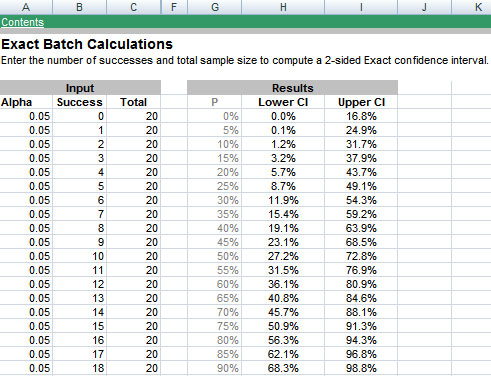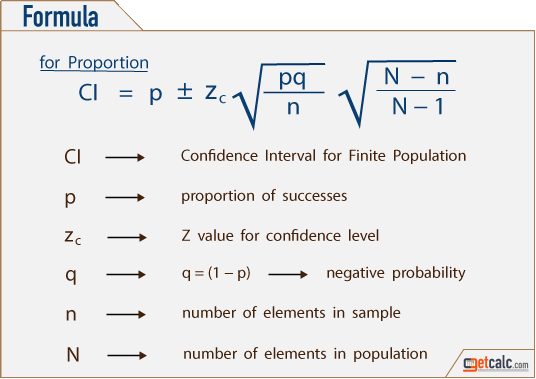

Confidence intervals are often used with a margin of error. What is a Z Interval What is the Definition of a Confidence Interval A confidence interval is how much uncertainty there is with any particular statistic.

It is all based on the idea of the Standard Normal Distribution, where the Z value is the "Z-score"įor example the Z for 95% is 1.960, and here we see the range from -1.96 to +1.96 includes 95% of all values:įrom -1.96 to +1.96 standard deviations is 95%Īpplying that to our sample looks like this:Īlso from -1.96 to +1.96 standard deviations, so includes 95% Conclusion Wilson CI See also: Binomial Confidence Intervals. So an HR of 0.92 means the subjects were better off, and a 1.03 means slightly worse off. * Note for the curious: "HR" is used a lot in health research and means "Hazard Ratio" where lower is better. "HR" is a measure of health benefit (lower is better), so it says that the true benefit of exercise for the wider population of men has a 95% chance of being between 0.88 and 0.97 had a "HR" (see below) with a mean of 0.92,.What is it saying? Looking at the "Male" line we see: Here is Confidence Interval used in actual research on extra exercise for older people: This is the risk in sampling, we might have a "bad" sample. So how do we know if our sample is one of the "lucky" 95% or the unlucky 5%? Unless we get to measure the whole population like above we simply don't know. 043AFoundationsforInference/4.033AConfidenceIntervals q3) calculate the z score of 90 confidence interval 94 confidence interval 60 confidence. That can happen about 5% of the time for a 95% confidence interval. These scores are used in statistical tests to show how far from the mean of the predicted distribution your statistical estimate is. Maybe we had this sample, with a mean of 83.5: The z-score and t-score (aka z-value and t-value) show how many standard deviations away from the mean of the distribution you are, assuming your data follow a z-distribution or a t-distribution. Now the true mean might not be inside the confidence interval, but in 95% of the cases it will be!ĩ5% of all "95% Confidence Intervals" will include the true mean. A Single Sample Confidence Interval Calculator (T Statistic) A Single-Sample Confidence Interval Calculator (Z Statistic) An Independent Samples Confidence. Effect Size Calculators Confidence Intervals. but the true mean is inside our confidence interval of 86 ± 1.79 (in other words 84.21 to 87.79) Quick Bayes Theorem Calculator Effect Size. Let's lay all the apples on the ground from smallest to largest: Now imagine we get to pick ALL the apples straight away, and get them ALL measured by the packing machine (this is a luxury not normally found in statistics!) So the true mean (of all the hundreds of apples) is likely to be between 84.21 and 87.79 True Mean Z is the Z-value = 1.960 (from the table above for 95%).There are hundreds of apples on the trees, so you randomly choose just 46 apples and get:


 0 kommentar(er)
0 kommentar(er)
